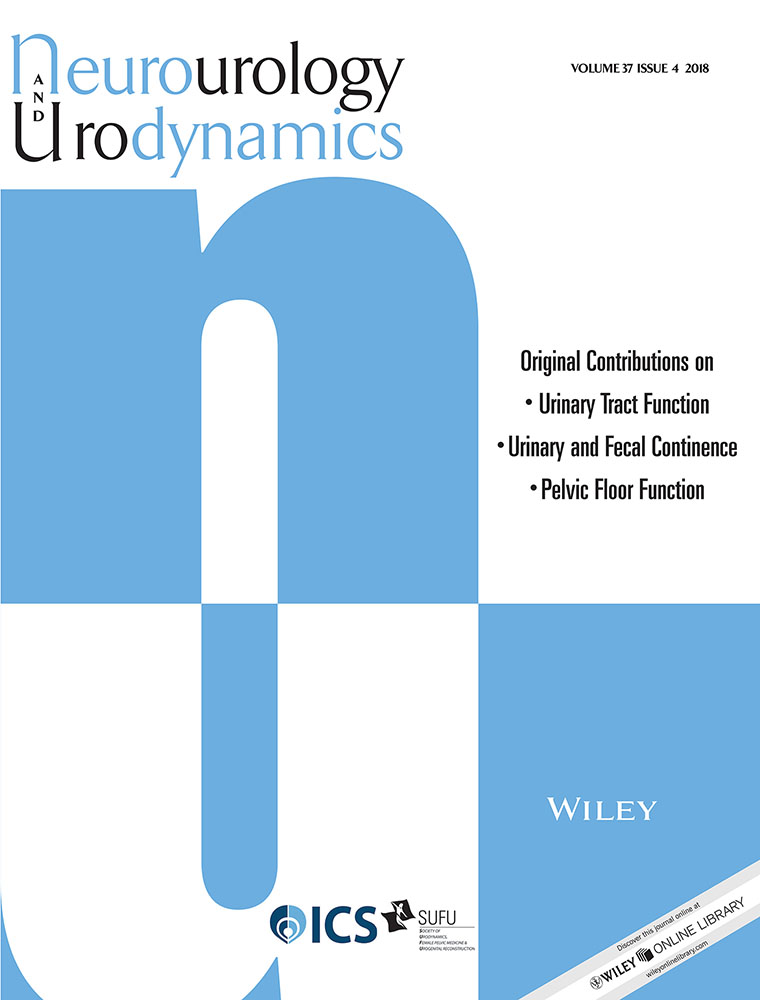Signs and symptoms that distinguish detrusor underactivity from mixed detrusor underactivity and bladder outlet obstruction in male patients
Abstract
Aims
This study aimed to identify signs and symptoms which show differences between men with detrusor underactivity (DU) compared to those with both DU and bladder outlet obstruction (BOO).
Methods
One thousand six hundred and twelve urodynamic tests on male patients were analyzed retrospectively. Signs and symptoms which showed a statistically significant difference between patients with DU alone and patients with both DU+BOO were identified.
Results
In the DU only group, considering only patients without a history of bladder outlet surgery, the number of daytime micturitions was lower, maximum voided volume on the bladder diary was higher, and slow stream was reported less often, whereas urinary tract infections were reported more often than for DU+BOO males. The average urine flow rate and abdominal pressure at maximum flow were greater in the DU males, compared to the DU+BOO males.
Conclusions
These data suggest that by combining symptoms, medical history and signs, that could be measured without the need for invasive urodynamics, it may be possible to identify men with DU in a non-invasive way. By doing so, men with DU could be separated from men with both DU+BOO, with sufficient specificity to allow the use of any new non-surgical treatment modalities, such as new and effective medical therapy.




